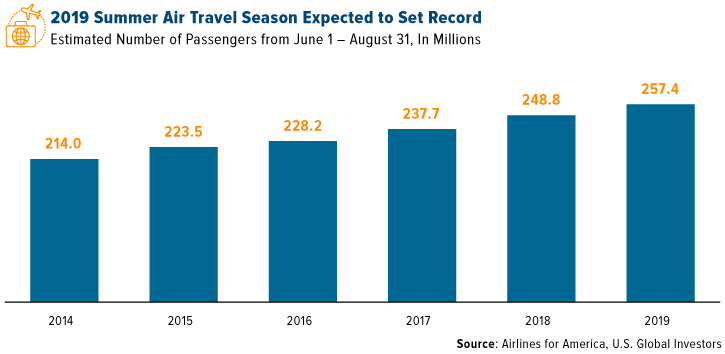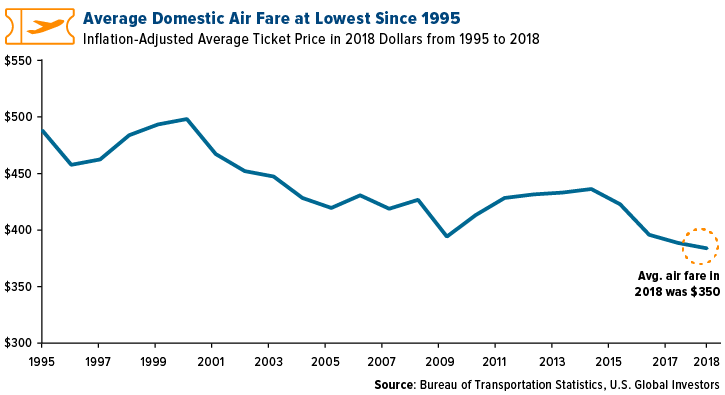
Summer is the busiest time of the year for airlines and airports, and 2019 is expected to be a scorcher. Airlines for America (A4A) expects a record 257.4 million passengers to travel on U.S. airlines from June 1 to August 31 – a staggering 2.8 million passengers per day. This number is up 3.4 percent from the same period last year and the 10th consecutive summer to see an increase. A4A reports that airlines are adding 111,000 seats per day to accommodate the additional passengers.
“Air travel is the nation’s safest form of transportation, and it is now more affordable than ever before. U.S. carriers are making airline flights more and more accessible,” says John Heimlich, vice president and chief economist at A4A.

Although greater passenger demand is great for airlines, many are currently facing plane shortages due to the grounded Boeing 737 MAX jets. Southwest and American Airlines have had to cancel flights in August, while United Airlines cancelled some during July. There is not yet an estimated date for the MAX jets to be approved and return to service, but the Federal Aviation Administration’s acting administrator said that airlines do not need to extend cancellations any further. Daniel Elwell told CNBC on May 23 that airlines “don’t need to make any changes to their plans.”
Fewer flights available during the busy summer travel season could potentially lead to higher ticket prices for consumers.
However, average ticket prices fell overall in 2018. Inflation-adjusted average air fares have actually fallen for four consecutive years and are at the lowest since 1995, when the Bureau of Transportation Statistics (BTS) began collecting the data. In 2018, the average domestic itinerary air fare was $350, which includes both round-trip tickets and one-way tickets with no return purchased. This figure is down 1.8 percent from 2017 and down 15.9 percent since 2014 – making air travel more and more affordable for the U.S. consumer.

In addition to growing domestic trips, air travel between the U.S. and foreign countries reached an all-time high last year. In 2018 there were 246.1 million international air passengers traveling to and from the U.S., according to the U.S. Department of Commerce National Travel and Tourism Office. International airlines carried 53 percent of passengers, which is up from 45 percent of passengers in 2011.
Learn more about air travel trends in this short video – click here.
To help combat busy airports, the Transportation Security Administration (TSA) will be piloting an in-journey tablet enrollment opportunity for travelers at select airports, reports A4A. This will allow travelers to enroll in TSA PreCheck while they are on their way to their airport gate. More than 8 million people have already enrolled in PreCheck, up from 4.2 million in 2016.
Looking to invest in airlines both domestic and international? The U.S. Global Jets ETF (NYSE:JETS) is the only pure-play ETF on the market today that provides investors exposure to just that. Learn more about the fund today and the global airlines it invests in!
All opinions expressed and data provided are subject to change without notice. Some of these opinions may not be appropriate to every investor.
